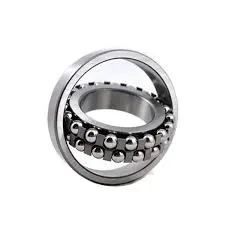
Nov . 27, 2024 21:46 Back to list
Adjustable Shims for Taper Roller Bearings to Optimize Performance and Alignment
Understanding Taper Roller Bearing Shims Enhancing Precision and Performance
Taper roller bearings are critical components in various machinery, renowned for their ability to support radial and axial loads simultaneously. Their unique design, characterized by conical races, allows them to handle heavy loads while maintaining precision. However, to achieve optimal performance and longevity from these bearings, the use of shims is essential. This article will delve into the importance, types, materials, and applications of taper roller bearing shims.
The Importance of Shims in Taper Roller Bearings
Shims are thin pieces of material inserted between the components of an assembly to adjust spacing, alignment, or load distribution. In the context of taper roller bearings, shims play a crucial role in achieving the correct preload and clearance between the bearing and its housing. Proper adjustment is vital, as it directly influences the bearing's operational efficiency, noise levels, and longevity.
When taper roller bearings are fitted, they must be precisely aligned and typically require a specific amount of clearance to function correctly. Too much clearance can lead to excessive movement and wear, while insufficient clearance can result in overheating and premature failure. Shims allow for fine-tuning of this gap, ensuring that the bearing operates within its optimal parameters.
Types of Shims
There are several types of shims used with taper roller bearings, each designed for specific applications and requirements
1. Flat Shims These are the most common type, used to create uniform spacing. They can be made from various materials, including metal and plastic, and are available in different thicknesses to achieve the desired clearance.
2. Adjustable Shims These offer the flexibility to change thickness easily, making them ideal for applications where frequent adjustments are required. Adjustable shims often come with a screw mechanism that allows for precise control over spacing.
Materials Used for Shims
taper roller bearing shims

The material used for shims depends on the specific application's requirements, including load capacity, thermal performance, and environmental conditions. Common materials include
- Steel Known for its strength and durability, steel shims are often used in heavy machinery applications. They can withstand high loads and are resistant to deformation.
- Aluminum Lightweight and corrosion-resistant, aluminum shims are suitable for applications where weight reduction is crucial. However, they may not be as durable under heavy loads.
- Plastic Nylon and other plastics can be used for shims in applications that require insulation from electrical currents or where corrosion is a concern. They are generally used in lower load situations.
Applications of Taper Roller Bearing Shims
Taper roller bearing shims are utilized in a wide range of industries and applications, including
1. Automotive Shims are commonly used in wheel bearings and transmissions, where precise clearance measurements are vital for smooth operation and longevity.
2. Aerospace In aircraft engines and landing gear, the integrity and precision of bearings are paramount. Shims ensure that these components function correctly under extreme conditions.
3. Industrial Machinery In heavy machinery, such as gearboxes and pumps, shims help manage the alignment and spacing of critical components, directly impacting performance and maintenance intervals.
Conclusion
Taper roller bearing shims are fundamental components that contribute significantly to the performance and reliability of machinery. By providing precise adjustments in spacing and load distribution, shims help ensure that taper roller bearings function optimally, leading to reduced wear and extended service life. Understanding the importance of shims, their types, materials, and applications allows engineers and technicians to make informed decisions that enhance machinery reliability and efficiency. Investing in high-quality shims may seem minor, but it can yield substantial long-term benefits in performance and maintenance costs.
Latest news
-
Spherical Roller Bearings Applications: Heavy Duty, Self-Aligning
NewsAug.30,2025
-
Premium Deep Groove Ball Bearings | High Speed & Reliability
NewsAug.29,2025
-
Durable Scaffolding Clamps - Secure & Reliable Tube Connectors
NewsAug.28,2025
-
Common Failures in Thrust Ball Bearings and Solutions
NewsAug.22,2025
-
How Tapered Roller Bearings Can Take Shock Loads
NewsAug.22,2025
-
Angular Bearings in High-Precision Spindles
NewsAug.22,2025
